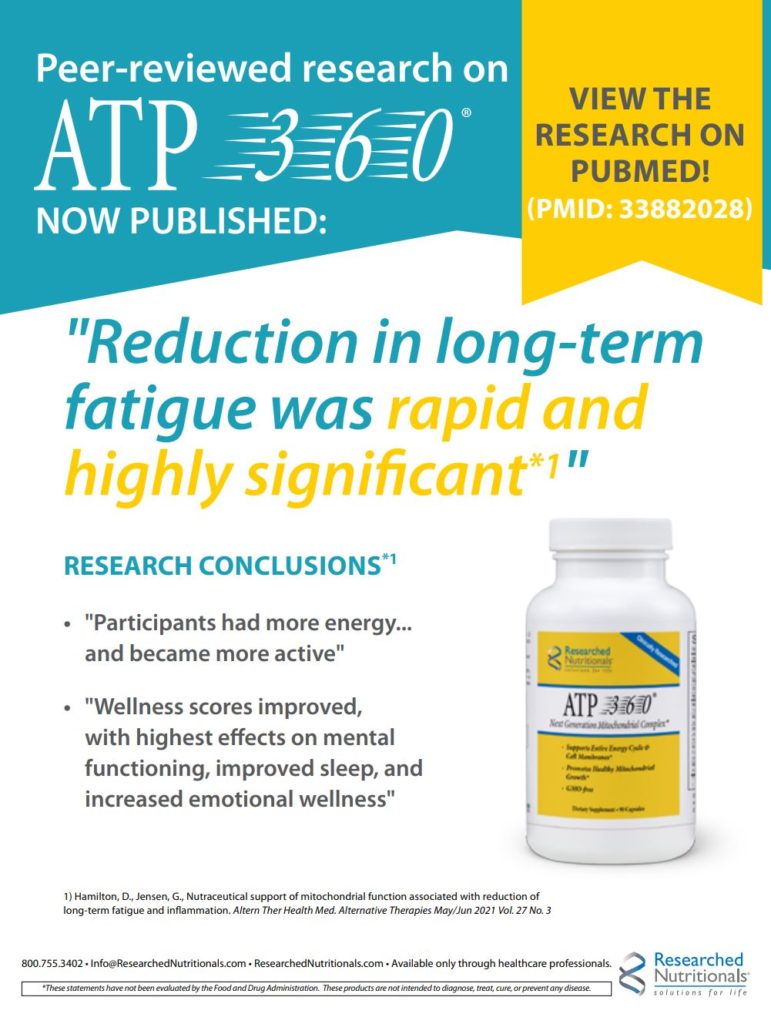Curmudgeon’s Corner
By Jacob Schor, ND, FABNO
Everybody’s going to die sooner or later. We know that. Will exercising delay the inevitable? That’s the question that multiple research studies have asked.
Epidemiological research has made us think that there is an association between the amount someone exercises and how long they live. But when epidemiology finds associations it is hard to know if they are causative rather than mere association. Ethical considerations prevent most human clinical trials to prove this. We can’t randomly ask people to model behaviors that are believed to be dangerous. Think of smoking. We couldn’t ask people to smoke two packs a day to see what happens. The best we can do is compare people who do smoke with people who don’t.
We also can’t ask humans to discontinue behaviors that might provide health benefit. Exercise falls into this category. Because evidence suggests exercise delays mortality, we can’t ask people to not exercise and wait to see what happens. Thus, we are left to look carefully at the data that can be gathered ethically.
A study by Ekelund et al published in the waning months of 2020 adds incrementally to our knowledge of the association between exercise and health. Past data have associated low physical activity with higher risk of many chronic diseases and higher risk of mortality.1 More recently, meta-analysis of these data suggested that the effect of sedentary behavior, that is time spent sitting, on morbidity and mortality is independent of physical activity; in other words, it doesn’t matter how much you exercise, the amount you sit is what really counts.2 This danger was well summed up in the phrase, “Sitting is the new smoking.”3
Some large meta-analyses have suggested that high physical activity attenuates this association between sitting and illness. In other words, intense exercise might neutralize the harm caused by sedentary lifestyles.4 But the amount of exercise required to counter the harms posed by sitting has varied widely between studies. A 2016 meta-analysis, which examined more than a million adults, suggested 60–75 min of daily physical activity could eliminate increased risk of death associated with excessive sitting.4 On the other hand, Stamatakis in 2019 reported that only 150–300 min of exercise per week was needed.5
Up to now these studies relied on data gathered via self-assessments of exercise and sitting times. Participants filled in questionnaires. Such self-assessments are inaccurate because of what is called “social desirability bias.” People can’t help but to describe their own behaviors in ways that make themselves sound better to others. Such self-assessments underestimate sedentary time, and over-estimate exercise time and intensity.6 Inaccurate data from multiple individual studies combined in meta-analyses only adds the inaccuracies together.
A recent 2020 meta-analysis by Ekelund et al improved the quality of results by excluding all self-assessment data and only used data from studies that categorized participant activity through accelerometer measurements. Using these gadgets to measure activity eliminated the weaknesses created by self-assessment.
Eklund combined individual level data from eight studies (n=36,383) and harmonized it for analysis. Mean age of participants was 62.6 years; (72.8% women), with median follow-up of 5.8 years yielding a total of 243,766 person years for evaluation. A total of 2,149 (5.9%) deaths occurred in the combined participants. Activity patterns were compared with all-cause mortality.
Death was ascertained through checking appropriate registries for about a decade after people had joined their respective studies.
Ekelund’s group put their data through multiple adjustments for age and sex (model 1), for socioeconomic status and body mass index (model 2), and then adjusted for other covariates included in the original studies including smoking, other diseases and health status (model 3). In a final adjustment, all deaths that occurred within the first 2 years of follow-up were excluded. (model 4). A further breakdown of data examined whether there was a dose-response association between sedentary time and all-cause mortality and whether this differed by physical activity levels for each of the models (1-4).
For all of these adjustments, participants were ranked into quartiles by exercise intensity. Compared to those in the least active quartile, any level of physical activity, regardless of intensity, was associated with a substantially lower risk of mortality. The magnitude of lowered risk was greatest for total physical activity; hazard ratios (95% confidence intervals) for increasing quarter were: 1.00 (referent, least active), 0.48 (0.43 to 0.54), 0.34 (0.26 to 0.45), and 0.27 (0.23 to 0.32). Higher levels of light-intensity physical activity, as well as low and high intensity physical activity, were associated with substantially reduced risks of death during follow-up. The risk reductions were most pronounced when the second quartile was compared against the lowest activity level for all adjustment models. [In simpler English, any exercise over hardly any, made the biggest difference.] For example, the risk was reduced to almost half [0.55 (0.49 to 0.63)] in the second quartile for high light-intensity physical activity and additionally reduced a bit more in the third (0.38, 0.30 to 0.48) and fourth (0.37, 0.32 to 0.46) quartiles compared with the lowest level of exercise. Higher levels of moderate-to-vigorous intensity physical activity were also associated with a reduced risk of death even after adjustment for sedentary time. According to the authors, “… maximal risk reductions were seen at about 375 min/day of light intensity physical activity or 24 min/day of moderate-to-vigorous intensity physical activity. … a statistically significantly higher risk of death was observed from 9.5 or more hours per day for time spent sedentary.”
The risk of death increased with increasing time spent sitting; hazard ratios for increasing quarters were 1.00 (referent), 1.28 (1.09 to 1.51), 1.71 (1.36 to 2.15), and 2.63 (1.94 to 3.56) in models that adjusted for age, sex, BMI, socioeconomic status, and time spent in moderate-to-vigorous intensity physical activity.7
These exercise studies, as meticulous as they seem, still leave me with a nagging hesitation to accept their results. These studies treat exercise as if it were something people decide to do, kind of like taking a daily baby aspirin. What if exercise is instead a reflection of a person’s vitality or to use the older term, vital force? What if people who aren’t well, or have low vital force, are those who exercise the least and also more likely to die? Just because there is an association between exercise and mortality, doesn’t mean that forcing someone to exercise more will change their underlying vital force. Our wanting it to be true doesn’t make it so. While Ekelund’s results should encourage us to put greater emphasis on getting our patients to engage in regular physical exercise and avoid long periods of sitting, they don’t actually prove causation.
For the past half-century epidemiologists have turned to the Bradford Hill Criteria to differentiate between mere association and causation. These criteria originated as epidemiologists tried to prove that smoking caused lung cancer. Bradford Hill came up with a list of characteristics that causative associations were likely to exhibit. They included the consistency in which the association is found, the specificity between exposure and outcome, the temporal sequence (obviously exposure must precede outcome), biological gradient (intensity of exposure should correlate with severity or risk), biological plausibility, coherence with current knowledge, experimental findings (removal of exposure alters disease frequency or severity), and analogy (the relationship is analogous to other cause-effect relationships).8 To me, they bring to mind the movie Pirates of the Caribbean and the line about how the Pirates Code isn’t a hard and fast rule but more of a guideline. Same with the Bradford Hill Criteria; they suggest but don’t prove the relationship.
The Copenhagen City Heart Study published in 2015 may be the best argument against my ‘vitality explanation’, that I can think of, not because it fits the Bradford Hill Criteria but because the biological gradient demonstrated wasn’t what we expected. This study also examined the relationship between exercise and longevity, in this case by comparing outcomes between joggers (n=1098) and non-joggers (n=3950) and looked closely at exercise intensity. Rather than a straight-line dose response to exercise, “The findings suggest a U-shaped association between all-cause mortality and dose of jogging as calibrated by pace, quantity, and frequency of jogging. Light and moderate joggers have lower mortality than sedentary nonjoggers, whereas strenuous joggers have a mortality rate not statistically different from that of the sedentary group.”
Jogging for one to almost two-and-a-half hours per week was associated with a significant 71% decrease in risk of dying compared to the non-joggers ([HR]: 0.29; 95% confidence interval [CI]: 0.11 to 0.80). The most benefit was seen for those who went jogging 2 to 3 times per week [68% decrease in risk (HR: 0.32; 95% CI: 0.15 to 0.69)] or even ≤1 time per week [71% decrease (HR: 0.29; 95% CI: 0.12 to 0.72)] with the results varying slightly with pace; a slow pace [49% decrease (HR: 0.51; 95% CI: 0.24 to 1.10)] wasn’t quite as beneficial as an average pace [62% decrease (HR: 0.38; 95% CI: 0.22 to 0.66)]. A faster or more strenuous pace was associated with less benefit. Joggers who ran often and fast, who were categorized as “strenuous joggers” were at nearly twice the risk of dying as those who didn’t jog at all (HR: 1.97; 95% CI: 0.48 to 8.14).9 These results negate the idea that people who can and do run harder are just innately healthier. To see this U-shaped response in which exercise initially produces benefit but at high levels causes damage seems to more accurately reflect a true biological response to something that puts physical stress on the body; a little bit is a good thing but too much isn’t.
To me, seeing a hormetic dose response, so common in biology, provides a stronger argument for causative effect than if the response had been straight line. It also argues against my idea of ‘vitality’.
If the only thing we can get a patient to do is to exercise somewhat regularly, we have done more to increase their lifespan than if we had gotten them to eat any specific diet, take any combination of vitamins or herbs, or pretty much anything else we might think of. That statement probably won’t go over well with this publication’s advertisers. I guess that’s why the publisher still calls this the Curmudgeon’s Corner.
[1]. Ekelund U, et al. Dose-response associations between accelerometry measured physical activity and sedentary time and all cause mortality: systematic review and harmonised meta-analysis. BMJ. 2019 Aug 21;366:l4570.
[2]. Biswas A, et al. Sedentary time and its association with risk for disease incidence, mortality, and hospitalization in adults: a systematic review and meta-analysis. Ann Intern Med. 2015 Jan 20;162(2):123-32.
[3]. Baddeley B, Sornalingam S, Cooper M. Sitting is the new smoking: where do we stand? Br J Gen Pract. 2016 May;66(646):258.
[4]. Ekelund U, et al. Lancet Physical Activity Series 2 Executive Committee; Lancet Sedentary Behaviour Working Group. Does physical activity attenuate, or even eliminate, the detrimental association of sitting time with mortality? A harmonised meta-analysis of data from more than 1 million men and women. Lancet. 2016 Sep 24;388(10051):1302-10.
[5]. Stamatakis E, et al. Sitting Time, Physical Activity, and Risk of Mortality in Adults. J Am Coll Cardiol. 2019 Apr 30;73(16):2062-2072.
[6]. Prince SA, et al. A comparison of direct versus self-report measures for assessing physical activity in adults: a systematic review. Int J Behav Nutr Phys Act. 2008 Nov 6;5:56.
[7]. Ekelund U, et al. Joint associations of accelero-meter measured physical activity and sedentary time with all-cause mortality: a harmonised meta-analysis in more than 44 000 middle-aged and older individuals. Br J Sports Med. 2020 Dec;54(24):1499-1506.
[8]. Rothman KJ. Epidemiology: An Introduction (2nd edition). Oxford University Press, 2012.
[9]. Schnohr P, et al. Dose of jogging and long-term mortality: the Copenhagen City Heart Study. J Am Coll Cardiol. 2015 Feb 10;65(5):411-9.








